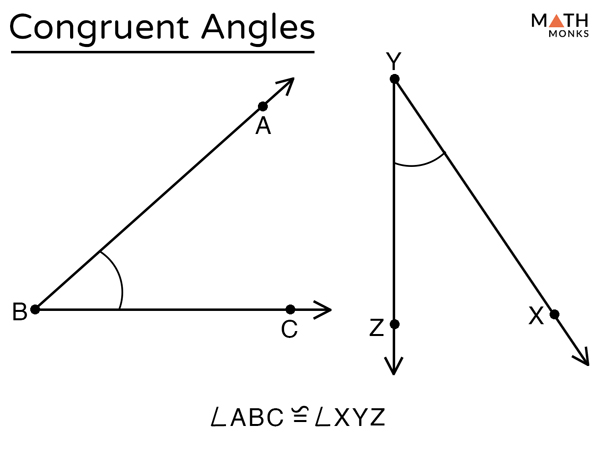
When we delve into the fascinating world of geometry, we often encounter various types of angles, each possessing unique properties and relationships. One question that frequently arises is, “Which angles are congruent to Angle 1?” This inquiry leads us into an intricate examination of congruence, providing not just a mathematical exploration but also a challenge to our understanding of angles in different contexts.
At the core of this discussion lies the concept of congruency. Two angles are said to be congruent if they share the same measure, irrespective of their orientation or position in the plane. The symbol for congruence is typically represented by an equal sign with a tilde over it (≅), allowing us to denote that two angles are equivalent in measure. This fundamental property of congruence serves as the foundation for our investigation into which angles can lay claim to being congruent with Angle 1.
A pivotal aspect of determining congruent angles is the recognition of specific conditions under which angles can be considered congruent. The most straightforward scenario is when two angles have identical measures. For example, if Angle 1 measures 45 degrees, then any angle measuring 45 degrees can be classified as congruent to Angle 1. However, this straightforward approach merely scratches the surface of the broader implications of angle congruence.
To broaden our understanding, let us consider the various geometric contexts in which Angle 1 resides. We may find ourselves presented with different types of angles such as vertical angles, corresponding angles, and alternate interior angles, each having its own distinct properties contributing to the congruence narrative.
1. Vertical Angles
One of the most vital concepts in angle congruence is vertical angles. When two lines intersect, they form two pairs of opposite angles, known as vertical angles. For instance, suppose Angle 1 is formed at the intersection of two lines, then its vertical angle, located directly opposite to it, will also be congruent to Angle 1. This phenomenon stems from the fact that vertical angles share equal measures, a result well established through various geometrical proofs.
2. Corresponding Angles
In the realm of parallel lines crossed by a transversal, we encounter the concept of corresponding angles. If Angle 1 is situated at the intersection of a transversal and one of the parallel lines, then the angle in a corresponding position on the other parallel line is congruent to Angle 1. The assertion that these angles maintain equality emerges from the properties associated with the parallel postulate, a cornerstone in Euclidean geometry.
3. Alternate Interior Angles
Similarly, when exploring alternate interior angles formed between two parallel lines and a transversal, we discover another pathway to congruence. If Angle 1 lies within one of the interior angles, then the alternate interior angle on the opposite side of the transversal will also be congruent to Angle 1. This intriguing relationship is particularly useful in solving various geometric problems where parallel lines are involved.
4. Complementary and Supplementary Angles
It’s also essential to ponder the relationships involving complementary and supplementary angles. Two angles are complementary if their measures sum to 90 degrees. Conversely, angles are supplementary if their measures total 180 degrees. If Angle 1 is known to be part of such pairs, then we can derive the congruent angles by calculating the complement or supplement accordingly. For example, if Angle 1 measures 30 degrees, then its complement, measuring 60 degrees, can be notable within specific geometric problems.
5. Application in Real-World Problems
Understanding which angles are congruent to Angle 1 has far-reaching implications beyond the confines of theoretical geometry. Many practical applications in engineering, architecture, and even art employ the principles of angle congruence. For example, constructing a roof that requires precise angles can benefit from knowledge of congruence to ensure structural integrity and aesthetic harmony. Thus, one can see that the mere act of identifying Angle 1’s congruents has tangible outcomes in the real world.
As we traverse through the assorted applications and definitions of congruency, the importance of visualization becomes imperative. Utilizing diagrams and sketches can illuminate the relationships between congruent angles, particularly within complex geometric figures. Employing tools such as protractors can also aid in measuring angles accurately, assisting in our quest to discern the congruence of these angles. This hands-on approach not only reinforces theoretical knowledge but also enhances practical skills.
A playful question to ponder at this juncture is: How would the properties of angle congruence change if we engaged in non-Euclidean geometries? Could there exist angles with congruences that defy traditional measures? Exploring such concepts can lead to deeper insights and challenge prevailing notions of angle relationships.
In conclusion, the exploration of which angles are congruent to Angle 1 is not merely an academic exercise. It unravels a tapestry woven from theoretical principles, practical applications, and an appreciation for the beauty of geometric relationships. From vertical and corresponding angles to the conditions of parallel lines, each relationship contributes richly to our understanding. Thus, one must remain curious and continue engaging with these concepts to fully appreciate the intricate connections angles present within our mathematical landscape.
